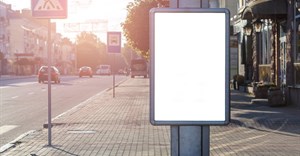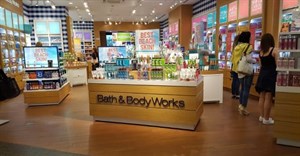Trending





 6 tips to help scale up your small businessGrant Lapping
6 tips to help scale up your small businessGrant Lapping
Elections 2024
It's not digit-all in store
The main points to consider when it comes to digital display are placement, positioning, messaging, financial models and return on investment.
Placement
One of my irritations is the placement of digital displays. Time and time again across different retail verticals, digital displays are placed at busy gondola ends. This creates shopper angst on two levels. First it increases shopper dwell time, which obstructs other shoppers on their purchase path and secondly, if you are engaging with the screen, you're always worried that you're blocking someone's path, thereby not giving you the opportunity to fully digest the message.
Many widescreen displays are also positioned way above stretch level, out of shopper sight. They often also bombard you at the critical transition zone as you enter the store where you're not susceptible to any messaging; when all shoppers want to do is easily orientate themselves before the shopper mission begins. This sets the wrong tone as expectations of a delightful and efficient shopper experience are quickly diluted.
I could go on, but the last bugbear I have are these mini-screens on-shelf; so small, messages too long, they normally obstruct shopping for product and who has over 30 seconds to view an advertisement when you're in a busy condiment aisle?
Positioning
Based on my exposure, digital display is sold in as a replacement to existing signage systems rather than a complementary part to existing in-store elements. Digital can't replace everything especially if one considers that shoppers have limited ability to focus.
Static signage systems quickly guide the shopper through the store. What's more, in many cases you want to set the aspiring archetypal semiotics, which resonate subliminally with the shopper. You have milliseconds to do this. Digital isn't the format for this and is too cost prohibitive.
One also needs to look at atmospherics and the balance of desired arousal states in line with desired shopping experience. This is a fine balance as digital can definitely heighten arousal states but the reciprocal is that it can perpetuate avoidance behaviour.
Messaging
One of the frustrations that many of my in-store digital peers share with me is that messaging is not tailored for the medium. In many instances it's the regurgitation of television spots - all very well for the consumer mindset but not for the shopper. The fundamentals of good static retail communication remains true for digital - you need to capture shopper attention, stop them in their tracks and close the sale, all in a matter of seconds.
Another area one needs to look at is tactful placement. There are many humorous and poor examples of this. For instance, in convenience, I was buying a hot beverage and a croissant and the screen behind the coffee counter was advertising Gaviscon, a product that helps relieve heartburn and indigestion.
The advantage of digital is that you have the opportunity to broadcast multiple concise shopper messages and even track which ones are the most successful. Yes, there are opportunities for digital to engage for longer periods with shoppers but this is where skilful placement comes into play. This is where education, infotainment and shopper solutions can drive the up- and cross-sell. The biggest opportunity where digital can't be touched, however, is the ability to communicate and sell to different shoppers on their different shopping missions with differentiated day-part, week-part, weekend, and month-end messaging.
Financial models
In some cases, retailers have secured third party service providers who procure and install the digital display networks to on-sell advertising and in return, retailers receive nominal revenues and/or airtime. Again, retailers are also regurgitating their above-the-line and not actualising the untapped opportunity to swiftly present tailored shopper solutions.
Other retailers are investing in their own digital display assets (usually only focussing on their flagship stores) but not enough in the backend when it comes to frequently updating messaging inline with scanned data opportunities, promotions, slow moving inventory, locality marketing, expiration etc. If retailers simply treat digital as a display alternative and not as a hard working sales tool, I don't think the steep investment will ever justify national or multiple in-store location rollouts.
Return on investment
Many studies have highlighted the increase in shopper exposure, shopper impressions and even increased sales. To date I haven't seen any studies that benchmark increase of sales using digital display in-store versus other elements. I'd like to see the difference in increased sales versus point-of-purchase displays, glorified gondola ends, cross-merchandising, category banners and even shelf talkers.
More importantly is to measure true return on marketing investment (ROMI). It's all very well saying that digital (or any other in-store medium) increased value by 15%, but what one really has to look at is the additional sales compared to same period last year and/or baseline versus the investment, and whether the incremental contribution margin is self-funding. True ROMI will accurately tell you which vehicle is best (it may even be a combination of elements).
In terms of costs, one must also take logistical costs/savings when it comes to packing, kitting, distribution and installation.
Last, and perhaps the most important, is to track the impact on shopper behaviour for the few months after the promotion period.
Conclusion
Digital display is a unique medium and should be treated as such. It opens up a plethora of opportunity, which can, if used right, drive additional sales that other in-store mediums simply can't. It has to be congruent with other in-store elements and needs special focus or it will quickly become part of the clutter.
Please note: These views and opinions are my own and not those of my employer or customers.













